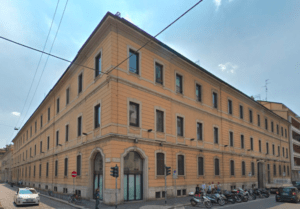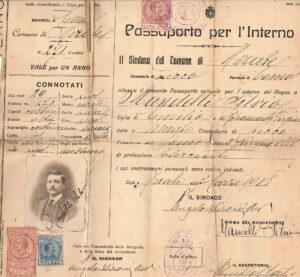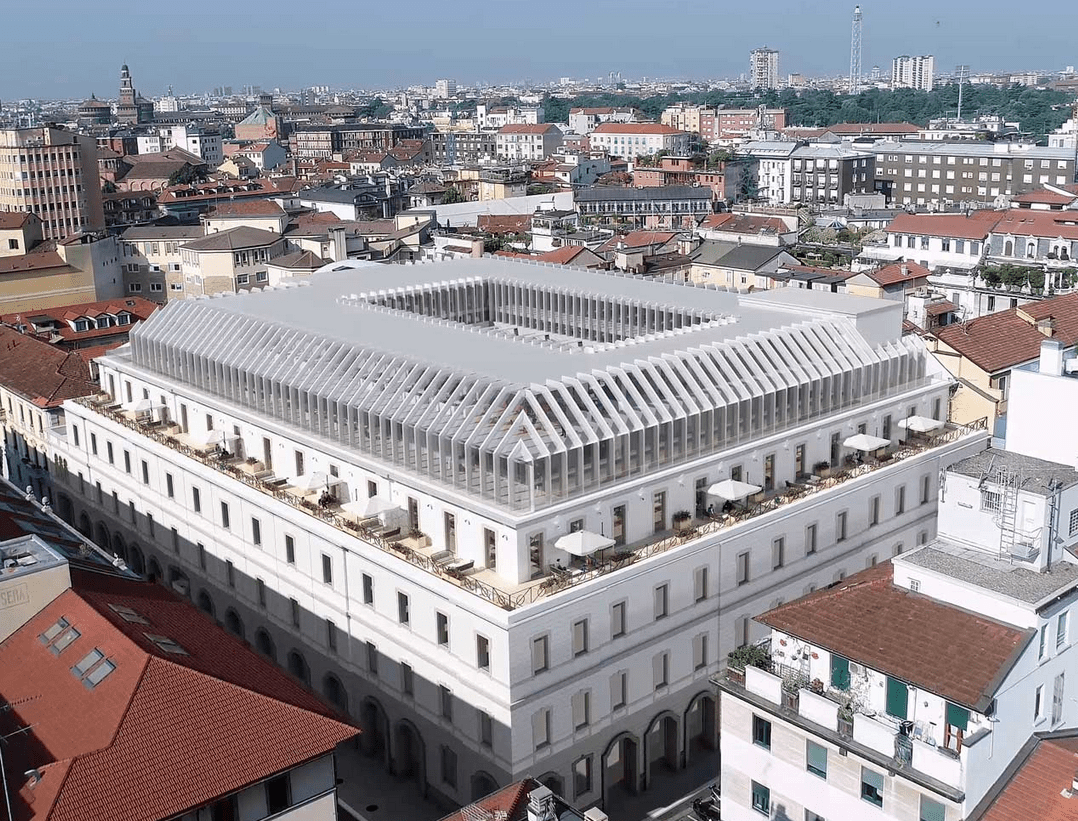Milan – The fascinating history of the “Cortile della Seta” (silk courtyard)
Milan – The fascinating history of the “Cortile della Seta” (silk courtyard)
… the history of Milan, the history of silk, part of the history of Cosetex
It is spoken of as one of the largest redevelopment and real estate business projects. In Milan there is a place, the “cortile della Seta”, (silk courtyard) where history and silk walk together. The building in via Moscova, 33, following a period of renovation, is currently home to two of the most iconic fashion groups: Loro Piana (LVHM group) and Kering, as well as the showrooms of important brands such as Flexform, Calligaris and Lodes. The cortile della Seta represents, for those like us at Cosetex, who spend every day in contact with this incredible fibre, much more than just a building.
Milan – end of the 1800s
Initially used as a barracks of the Napoleonic cavalry, it was rebuilt in 1888, becoming the headquarters of the Cooperative Society for the Ageing and Sampling (evaluation) of Silks and Similar on behalf of 77 merchants and silk producers.
Milan – 1900

The inner courtyard was the focal point of the structure:
- the merchants/producers called Bigattée, (a term that referred to the silk manufacturers, those who took care of the breeding of the “Bigat” bugs), carried their wagons;
- negotiations would take place that determined the official price of silk.
- in some delimited areas, there were deposits for yarns, combed fibres and for silk fibres
- underneath the stained glass vault, in the middle of the courtyard, were the market stalls.
This area of Milan, on the edge of Brera, soon became a place where traders and middlemen regularly met in what was then called the Stradone di Santa Teresa.
There was a twofold activity:
- a qualitative evaluation of the goods in silk with relative weighing, ageing, storage and safekeeping;
- a commercial trading and financial activity with advance and financing operations with guarantee of the deposit of goods and management of investments guaranteed by the shareholders.
Soon the financial activity took over and the palace became the headquarters of the Banca del Commercio Serico, later transformed into a bank called Banca Popolare Commercio e Industria.
Affected by bombing during the Second World War, it was rebuilt and expanded in 1954 and maintained for a few years its function as a goods warehouse for silk ageing.
Milan Cortile della Seta and the history of Cosetex

In our DNA and in our history there is silk and there are memories of documents and stories that refer to the “cortile della seta” and the Milan area in Via Moscova:
Our grandfather, Silvio Mandelli, precursor of Cosetex‘s activity and of the innovative projects of T.Silk, loaded the wagon with the various products and the silk waste, wearing the typical Tabarro, (a heavy cloak to be worn over one’s coat), greeted the family, with hope and prayer for a good sale, was preparing to descend towards Milan.
An event to be celebrated on his return, with the frenzy and the expectation of the result of the negotiations that would have determined the entire year to follow.

